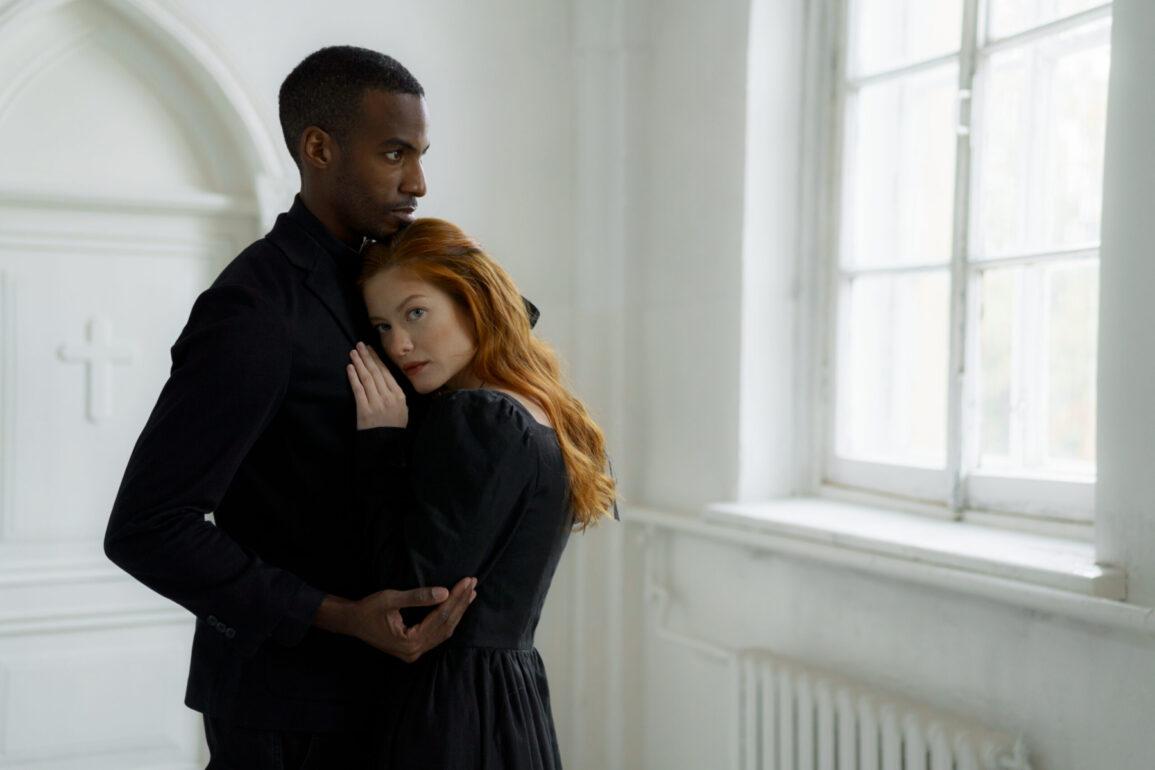He looked at her, expression unreadable. She smiled, but her fingers gripped the edge of her glass like it was an anchor. Two people, inches apart, yet miles away. I’ve seen this before. More than once.
The question isn’t just who you love—it’s how you love. If you’ve ever wondered which attachment styles are compatible (or why your relationships feel like a tug-of-war), you’re not alone.
I’m Claire Delli Santi, a relationship dynamics expert and senior editor at Sons of Universe. I’ve spent years dissecting attachment theory—not just in books, but in real-life interactions. And that couple I mentioned? Their dynamic held a truth that could change the way you see compatibility forever. Let’s talk about it.
And, if you’re curious about how different relationship dynamics play out, this breakdown of relationship types will give you real insight.
Key Nuggets
- Not all mismatched attachment styles are doomed. Some combinations can thrive—if you know how to balance emotional needs.
- Two anxious or avoidant partners? It’s not what you think—some same-style pairings can work better than mixed ones.
- The worst pairing isn’t what you expect. The real rollercoaster? One partner craving closeness, the other running from it.
- Love isn’t luck—it’s patterns. Shift the cycle, and suddenly, the avoidant leans in, the anxious stops chasing—and everything changes.
Attachment Styles That Work Best Together
I’m sure you guessed that pairing two secure attachment styles would result in a good relationship, and you are correct! They are both open to intimacy and have excellent communication skills. They have a secure perception of themselves and their relationship, which aids in the elimination of defensiveness and blaming.
That all sounds great, but what if you don’t have a secure attachment? Is it still possible to build a fulfilling connection? Absolutely! Understanding which attachment styles are compatible can make all the difference. When insecure attachment styles pair with securely attached mates, something truly interesting happens.
It’s known as the secure buffering effect (or “relationship buffering” in psychology). That is, the security of a secure couple frequently develops the insecure partner towards a more secure position.
The attentiveness and support of the secure spouse actually helps to develop relationship stability! So much so that there is no discernible difference between secure and “mixed” marriages. Isn’t it fascinating? You can see why secure partners are regarded as super-mates now!
Here’s a rundown of the most compatible pairings:
Best Compatibility Level
- Avoidant/Dismissive + Secure
- Anxious/Preoccupied + Secure
- Anxious Avoidant / Fearful Avoidant +Secure
- Secure + Secure
When Compatibility is Not Exciting
This is when things get interesting. Since they share the same attachment style, you’d think two people with identical relationship patterns would create a secure relationship—but that’s not always the case.
Take an avoidant couple, for example. With their strong need for emotional distance and self-reliance, they often avoid deep emotional intimacy altogether. They might cohabit, functionally exist as romantic partners, but lack the sense of security needed for long-term connection. Over time, their distance from intimacy can lead to an aloof attachment style, reinforcing their avoidance.
Then there’s the anxious-preoccupied couple—a different challenge altogether. Their fear of intimacy makes them hyper-aware of shifts in their romantic relationships, leading to protest behavior and constant validation-seeking. If they don’t develop secure attachments and manage their attachment strategies, their desire for intimacy can turn into cycles of emotional highs and lows.
The key? Learning from secure couples—balancing closeness and independence without triggering each other’s worst instincts.
Here is a rundown of the medium level pairings:
Medium Compatibility Level
- Anxious/preoccupied +anxious/preoccupied
- Avoidant + avoidant
You may also like: How to heal avoidant attachment style: 5 critical steps you should know
Is it a struggle to convince him to spend time with you?
Understanding males on a much deeper emotional level is the key to fixing the problem. The number one issue that drives men to behave in this manner is actually rather simple to modify with a few modest things you might say to him.
Take this simple survey to determine the #1 reason he isn’t paying attention to you and to be matched with someone you can talk to who can help you address it!
Warning: Very Low Compatibility
So, what are our options now? Can you make a guess?
An anxious partner matched with an avoidant partner is the pairing I would most strongly advise against. This is why I call it the roller-coaster relationship—one person craves emotional intimacy, the other needs space from intimacy. The push-pull is exhausting.
The anxious attachment type thrives on constant reassurance, while the dismissive-avoidant attachment style prioritizes independence, often seeing closeness as suffocating. If you don’t understand which attachment styles are compatible, this dynamic can feel like an endless cycle of frustration. Their needs are fundamentally at odds.
Is this couple doomed? No. But can they create a healthy balance? Only if both are willing to recognize their attachment strategies and make changes. Understanding your personal attachment style is the first step toward breaking the cycle.
Seeking professional counsel—like couples therapy or a relationship coach—can help shift the dynamic before resentment takes over.
Here’s a rundown of the most challenging pairing:
Warning Compatibility Level
- Avoidant + worried/preoccupied
You may like: Escaping The Anxious Avoidant Relationship Trap: 9 Steps To Break The Cycle (& Make It Work)
My Personal Take
Here’s what no one tells you—compatibility isn’t just about attraction, shared values, or even love. It’s about patterns. If you don’t understand yours, you’re stuck repeating the same relationship mistakes, just with different faces.
That couple I mentioned? I overheard them in a crowded bar.
She reached for his hand. He pulled his drink closer instead. She asked a simple question, but his delayed response—calculated, distant—landed like a gut punch. It wasn’t cruelty. It was attachment mismatching in real-time. She craved emotional closeness, he needed space from intimacy. If they had understood which attachment styles are compatible, they might have found a way to bridge the gap.
That’s why understanding which attachment styles are compatible matters. Not in some “this style is better than that one” way, but in learning how to make mismatched dynamics actually work.
Most people try to fix this alone. They read books, overanalyze texts, try (and fail) to “communicate better.”
But real change? It takes strategy, not just awareness. That’s why I highly recommend Relationship Hero’s online coaching—the fastest, most effective way to break toxic cycles without the overwhelm of traditional therapy. Their coaches are sharp, empathetic, and trained in science-backed techniques that actually help you rewire your relationship patterns.
Because sometimes, the difference between heartbreak and a thriving connection isn’t luck—it’s knowing what to do next.
Conclusion
There is no such thing as a doomed relationship! Relationships can become stronger and more rewarding with conscious effort and understanding. Don’t give up; instead, try to grasp the dynamics and what your partner need.
When assessing attachment styles, keep in mind that a possible partner’s desire to grow is an important consideration.
A secure attachment style can be created in the context of a relationship when two partners are jointly invested in bringing about positive change. Healing and positive transformation occur when two individuals are intensely engaged on becoming more self-aware, other-aware, loving, and sensitive.
You may like:
Cracking Your Partner’s Love Language: 8 Things Most Couples Ignore (And Steps to Succeed)
What triggers anxious attachment? 15 causes to watch out for
PS: Can You Change Your Attachment Style?
Check this great TED Talk video by Ashley Harvey:
What if a relationship coach could help you?
Talking to a relationship coach can be very helpful if you are looking for specific advice regarding your situation.
This is something I have personally experienced…
When I was going through a tough patch in my relationship, I reached out to Relationship Hero. The insights they gave me into the dynamics of my relationship and how to get it back on track were invaluable for me after being lost in my thoughts for so long.
If you haven’t heard of Relationship Hero before, it’s a website where highly trained relationship coaches guide people through difficult times in their love lives.
You can receive tailor-made advice for your specific situation within minutes by connecting with a certified relationship coach.
Despite being new to coaching, I was blown away by how kind, empathetic, and helpful my coach was.
Take advantage of our exclusive $50 off offer for Sons Of Universe readers.
You may also like:
Cracking the Code: Loving Someone with Avoidant Attachment (Understanding & Navigating the Patterns)




